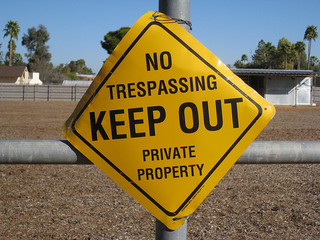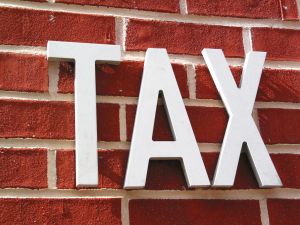My last post discussed the relative hardship doctrine in California real estate law. This doctrine provides that, once the court determines that a trespass has occurred, the court conducts an equitable balancing to determine whether to grant an injunction prohibiting the trespass, or whether to award damages instead. If the court determines that it will award damages and not disturb the trespass, it essentially gives the trespasser an easement, which may allow exclusive use. This result differs from the law on prescriptive easements, which prohibits granting exclusive prescriptive rights. This blog discusses how it differs For a better understanding, a party with questions should consult with a Sacramento and El Dorado real estate attorney.
 In the decision of Hirshfield v Schwartz, One neighbor in Bel-Air mistakenly encroached on the other neighbor’s property in installing a strong block wall in front, and in the rear, extensive underground water and electrical lines, and several motors (for the pool and waterfall) underground in a concrete and iron enclosure. The judge balanced the hardship to the trespasser to move these items, vs. the harm to the victim, and decided that they did not need to be moved. The trespasser was to compensate the victim instead. In doing so, the judge granted the trespassers an interest in the neighbor’s property, which it called an ‘easement.’ The victim appealed, claiming that this is contrary to the decisions in several prescriptive easement cases, which hold that such an exclusive easement is an unlawful remedy in boundary disputes.
In the decision of Hirshfield v Schwartz, One neighbor in Bel-Air mistakenly encroached on the other neighbor’s property in installing a strong block wall in front, and in the rear, extensive underground water and electrical lines, and several motors (for the pool and waterfall) underground in a concrete and iron enclosure. The judge balanced the hardship to the trespasser to move these items, vs. the harm to the victim, and decided that they did not need to be moved. The trespasser was to compensate the victim instead. In doing so, the judge granted the trespassers an interest in the neighbor’s property, which it called an ‘easement.’ The victim appealed, claiming that this is contrary to the decisions in several prescriptive easement cases, which hold that such an exclusive easement is an unlawful remedy in boundary disputes.
The appellate court disagreed with the prescriptive easement characterization, and thus those decisions were irrelevant. Here’s why.
When a trial court refuses to enjoin encroachments which trespass on another’s land, “the net effect is a judicially created easement by a sort of non-statutory eminent domain.” The courts may exercise their equity powers to affirmatively fashion an interest in the owner’s land which will protect the encroacher’s use. This equitable power had been established in a number of reported decisions. While the court had mentioned the term “prescriptive easement,” it had stated:
“[S]itting as a court in equity, I found that a straightforward judgment in favor of the [Schwartzes] would not be equitable, so I’ve taken the additional step of making it clear that this is a present easement which will end when certain events occur, and I’ve provided that the [Schwartzes] will pay a significant amount of money to the [Hirshfields].”
 Thus, the court expressly stated that it was relying on its equitable powers, and in doing so ordered the trespasser to pay damages for there protected interest. While a court can order payment under its equity powers, it could not do so in the case of a prescriptive easement. In the prescriptive easement cases it was noted that an exclusive prescriptive easement essentially amounted to ownership of the disputed land, and the court could not order ownership without all the requirements for adverse possession. In those decisions there was no discussion of the court’s equity power to create a protective interest for the trespasser. These cases were solely concerned with the integrity of the adverse possession laws. In prescriptive easement, the trespasser’s intent to dispossess the owner need not be innocent (and sometimes, innocence works against adverse possession). In the relative hardship test, the trespassing party is required to be innocent. As stated in another decision, It is not an ownership right, but a right to a specific use of another’s property. We are required to observe the traditional distinction between easements and possessory interests in order to foster certainty in land titles. Moreover, the requirement for paying taxes in order to obtain title by adverse possession is statutory. (Code Civ. Proc., § 325.) The law does not allow parties who have possessed land to ignore the statutory requirement for paying taxes by claiming a prescriptive easement. (Kapner v Meadowlark 116 Cal.App.4th 1182)
Thus, the court expressly stated that it was relying on its equitable powers, and in doing so ordered the trespasser to pay damages for there protected interest. While a court can order payment under its equity powers, it could not do so in the case of a prescriptive easement. In the prescriptive easement cases it was noted that an exclusive prescriptive easement essentially amounted to ownership of the disputed land, and the court could not order ownership without all the requirements for adverse possession. In those decisions there was no discussion of the court’s equity power to create a protective interest for the trespasser. These cases were solely concerned with the integrity of the adverse possession laws. In prescriptive easement, the trespasser’s intent to dispossess the owner need not be innocent (and sometimes, innocence works against adverse possession). In the relative hardship test, the trespassing party is required to be innocent. As stated in another decision, It is not an ownership right, but a right to a specific use of another’s property. We are required to observe the traditional distinction between easements and possessory interests in order to foster certainty in land titles. Moreover, the requirement for paying taxes in order to obtain title by adverse possession is statutory. (Code Civ. Proc., § 325.) The law does not allow parties who have possessed land to ignore the statutory requirement for paying taxes by claiming a prescriptive easement. (Kapner v Meadowlark 116 Cal.App.4th 1182)
photos:
http://www.flickr.com/photos/athomeinscottsdale/3279949186/sizes/n/
http://www.sxc.hu/photo/169849
 California Real Estate Lawyers Blog
California Real Estate Lawyers Blog

